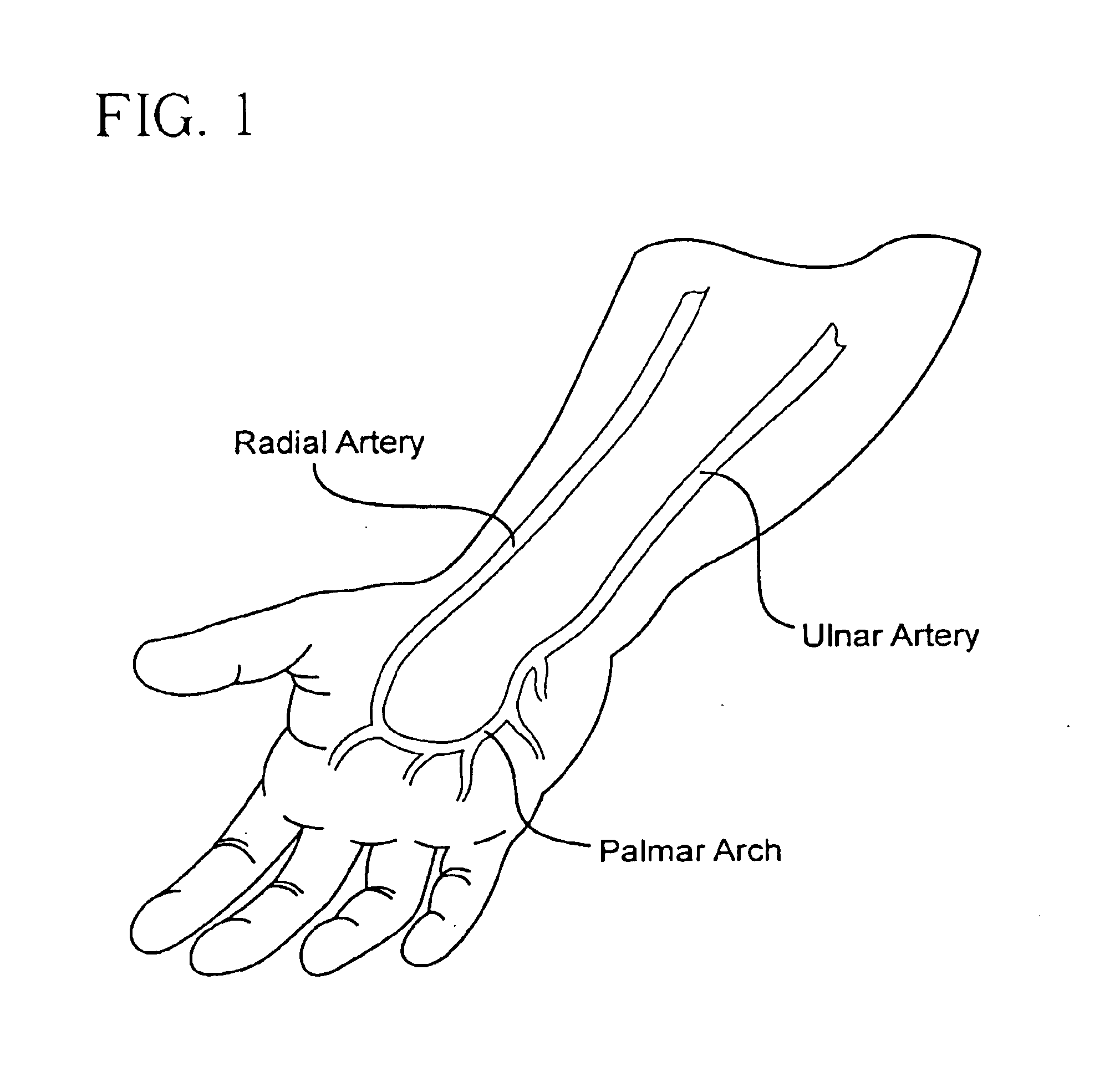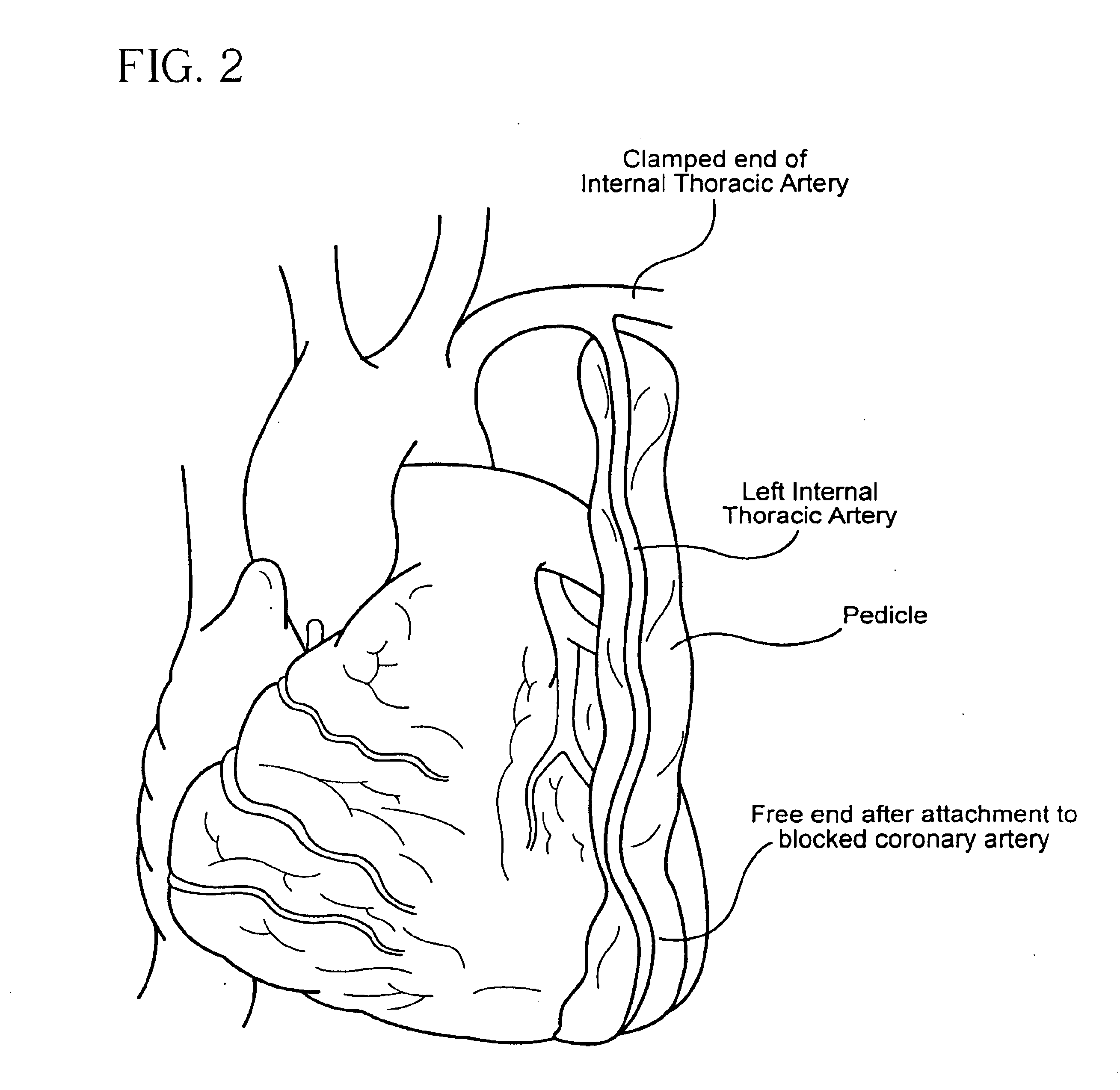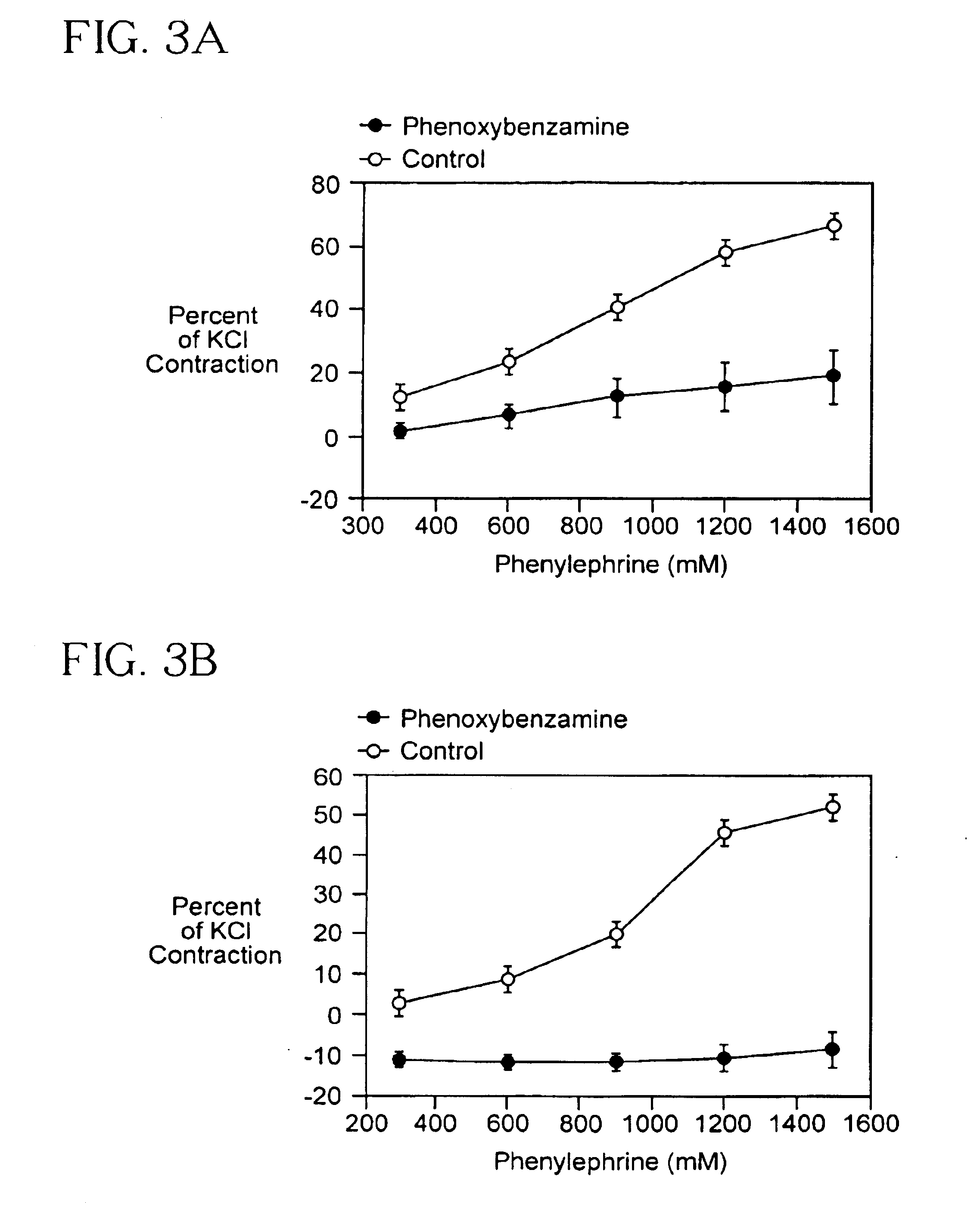Methods and formulations for minimizing spasticity in blood vessel grafts
a blood vessel and spasticity technology, applied in blood vessels, extracellular fluid disorder, peptide/protein ingredients, etc., can solve the problems of increased resistance, arterial grafts, and vein grafts
- Summary
- Abstract
- Description
- Claims
- Application Information
AI Technical Summary
Benefits of technology
Problems solved by technology
Method used
Image
Examples
example 1
[0045]Canine radial arteries were harvested without pedicles, and incubated in control buffer or solutions of papavarine (10−6M), 2, 3-butadione monoxime (BDM, 10−6M) (a putative protein phosphatase) or phenoxybenzamine (10−6M) for a period of 30 minutes. The arteries were then washed with buffer and stored in a drug-free culture medium for a set time period (2 hours, 24 hours or 48 hours per example). After storage, vasopressors norepinephrine or phenylephrine were added at incremental concentrations ranging from 0.7 to 3.5 μmol / L (norepinephrine) or 0.300 to 1.5 μmol / L (phenylephrine) to all arterial samples to attempt to induce spasticity or vasoconstriction. The degree of vasoconstriction was then quantified in organ chambers. The responses of the arterial samples to norepinephrine or phenylephrine were compared with spasticity or constriction with receptor-independent potassium chloride (KCl) at 30 mmol / L.
[0046]In control radial artery segments the concentration-dependent contr...
example 2
Inhibition of Alpha Agonist-induced Vasoconstriction by Phenoxybenzamine in Human Radial Arteries
[0052]Radial artery (RA) segments were obtained from patients having elective coronary artery bypass grafting with or without cardiopulmonary bypass at the Crawford Long Hospital of Emory University. A modified Allen's test was performed to assess the adequacy of collateral circulation to the hand preoperatively. The RA was harvested with its pedicle containing the venae comitantes, perivascular fat and areolar tissue (no fasciotomy) using a “no-touch” technique. Branches of the RA were ligated with vascular clips. A subset of the radial artery grafts had the musculofascial tissue incised (with fasciotomy) to expose the aerolar tissue adjacent to the graft. The RA was then placed in a solution containing 20 mL heparinized blood, 1.6 mL 1% lidocaine and 0.4 mL papaverine (30 mg / mL) for approximately 30 minutes. The RA graft was flushed intraluminally with the blood / papaverine / lidocaine so...
PUM
| Property | Measurement | Unit |
|---|---|---|
| activated clotting time | aaaaa | aaaaa |
| pH | aaaaa | aaaaa |
| pressure | aaaaa | aaaaa |
Abstract
Description
Claims
Application Information
 Login to View More
Login to View More - R&D
- Intellectual Property
- Life Sciences
- Materials
- Tech Scout
- Unparalleled Data Quality
- Higher Quality Content
- 60% Fewer Hallucinations
Browse by: Latest US Patents, China's latest patents, Technical Efficacy Thesaurus, Application Domain, Technology Topic, Popular Technical Reports.
© 2025 PatSnap. All rights reserved.Legal|Privacy policy|Modern Slavery Act Transparency Statement|Sitemap|About US| Contact US: help@patsnap.com



